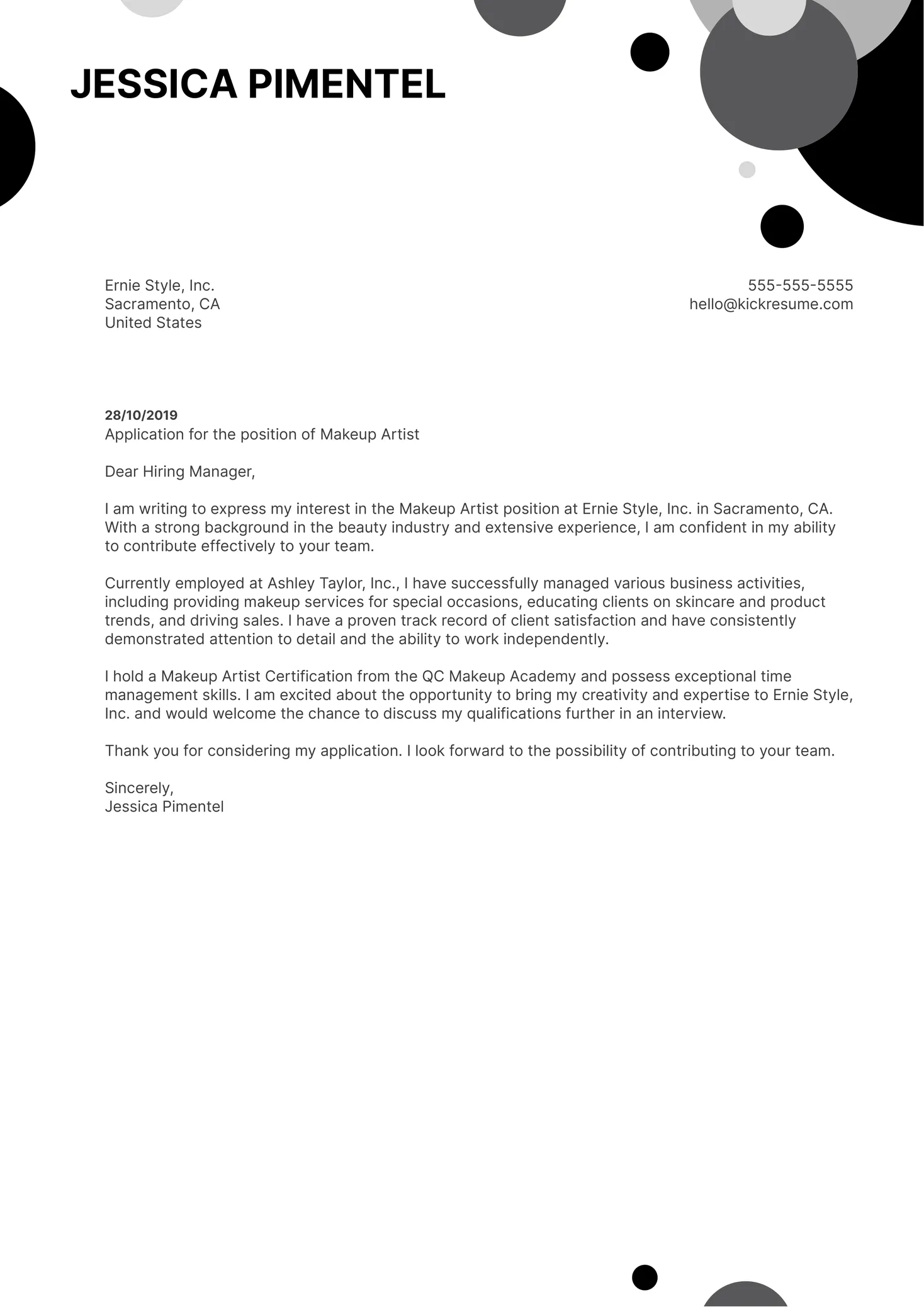Understand the Purpose of a Cover Letter
A cover letter for a graphic artist is more than just a formality; it’s a vital tool in securing your dream job. It serves as your first introduction to a potential employer, providing an opportunity to make a strong first impression. Unlike a resume, which is a concise summary of your skills and experience, your cover letter allows you to expand on your qualifications, showcase your personality, and demonstrate why you are the perfect fit for the role. It should act as a narrative, painting a picture of your capabilities and how they align with the company’s needs. A well-crafted cover letter can significantly increase your chances of getting your resume noticed and landing an interview. Therefore, treat it as a piece of your artistic portfolio – a chance to demonstrate your creativity and attention to detail.
Highlight Your Skills and Experience
The best cover letters go beyond simply listing your skills; they show how you’ve applied them. Briefly summarize your key accomplishments and tailor them to the specific job description. Instead of just stating you’re proficient in Adobe Creative Suite, describe a project where you successfully utilized those skills to solve a client’s problem or achieve a specific goal. Quantify your achievements whenever possible – for instance, ‘Increased social media engagement by 40%’ or ‘Designed marketing materials that resulted in a 25% increase in sales.’ Focus on the skills and experiences that directly relate to the job requirements, demonstrating that you understand the company’s needs and can deliver results. This targeted approach will make you stand out from other applicants.
Showcase Your Design Skills
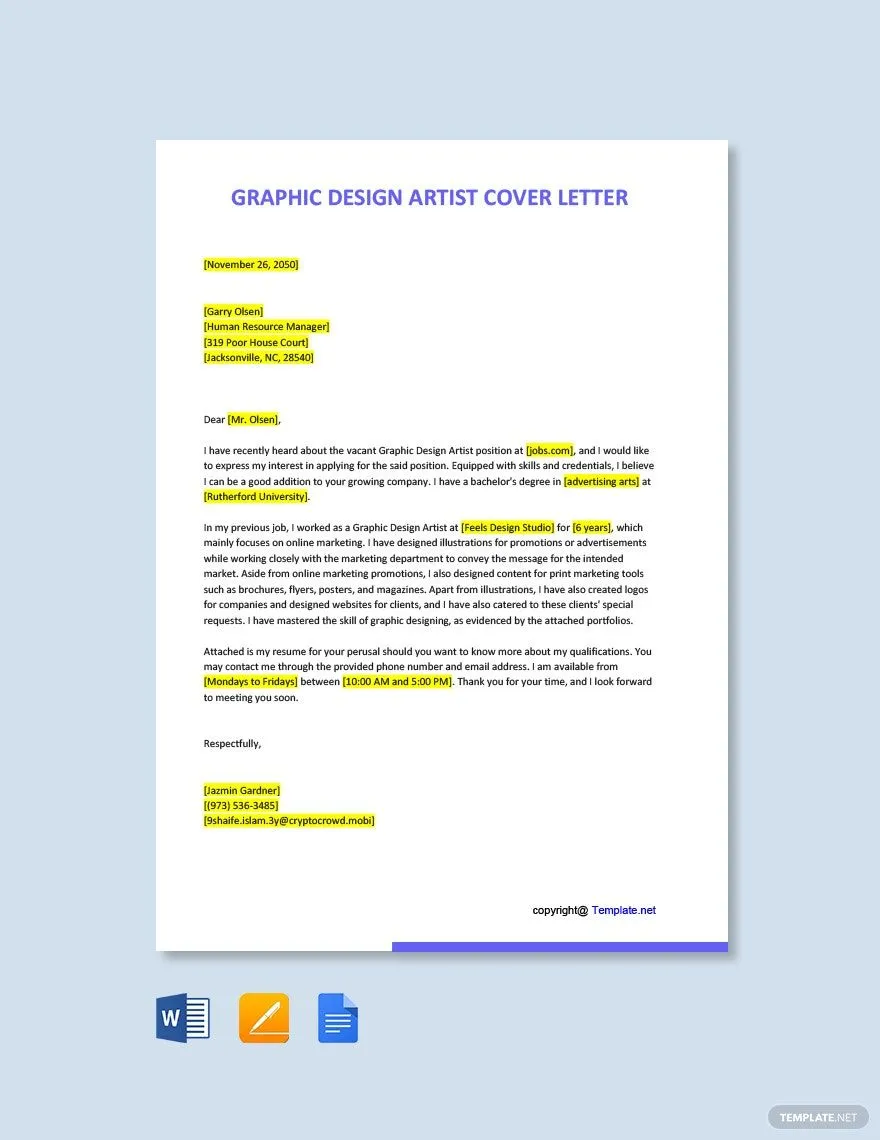
Your cover letter is a chance to visually demonstrate your design abilities. Even without being a formal portfolio piece, the design of your cover letter speaks volumes about your aesthetic sense, organizational skills, and understanding of visual communication. Pay attention to the layout, typography, and overall design elements. A well-designed cover letter immediately communicates your expertise and attention to detail. Consider it a mini-portfolio piece that complements your main portfolio.
Choose the Right Font and Layout
The choice of font and layout is crucial for a cover letter. Select a professional, readable font that reflects your design style. Ensure the layout is clean, uncluttered, and easy to follow. Use headings, subheadings, and bullet points to break up large blocks of text, making it visually appealing and accessible. Employ white space effectively to create a balanced look that guides the reader’s eye. Your cover letter should be a reflection of your design principles, showcasing your ability to create visually effective and engaging content.
Craft a Compelling Narrative
A cover letter isn’t just a list of your skills; it’s a story. The best cover letters captivate the reader by presenting your career journey as a cohesive narrative. Start with a brief, attention-grabbing statement about your passion for graphic design and why you’re drawn to the company. Then, weave your relevant experiences and accomplishments into a compelling narrative, highlighting your strengths and how they align with the job requirements. Your story should be unique, showcasing your personality and what makes you stand out from the crowd. Show, don’t just tell, the value you bring to the table. Consider the tone, is it professional? Is it reflective of your portfolio? The narrative gives the hiring manager a glimpse into your creative world.
Tailor to the Specific Job
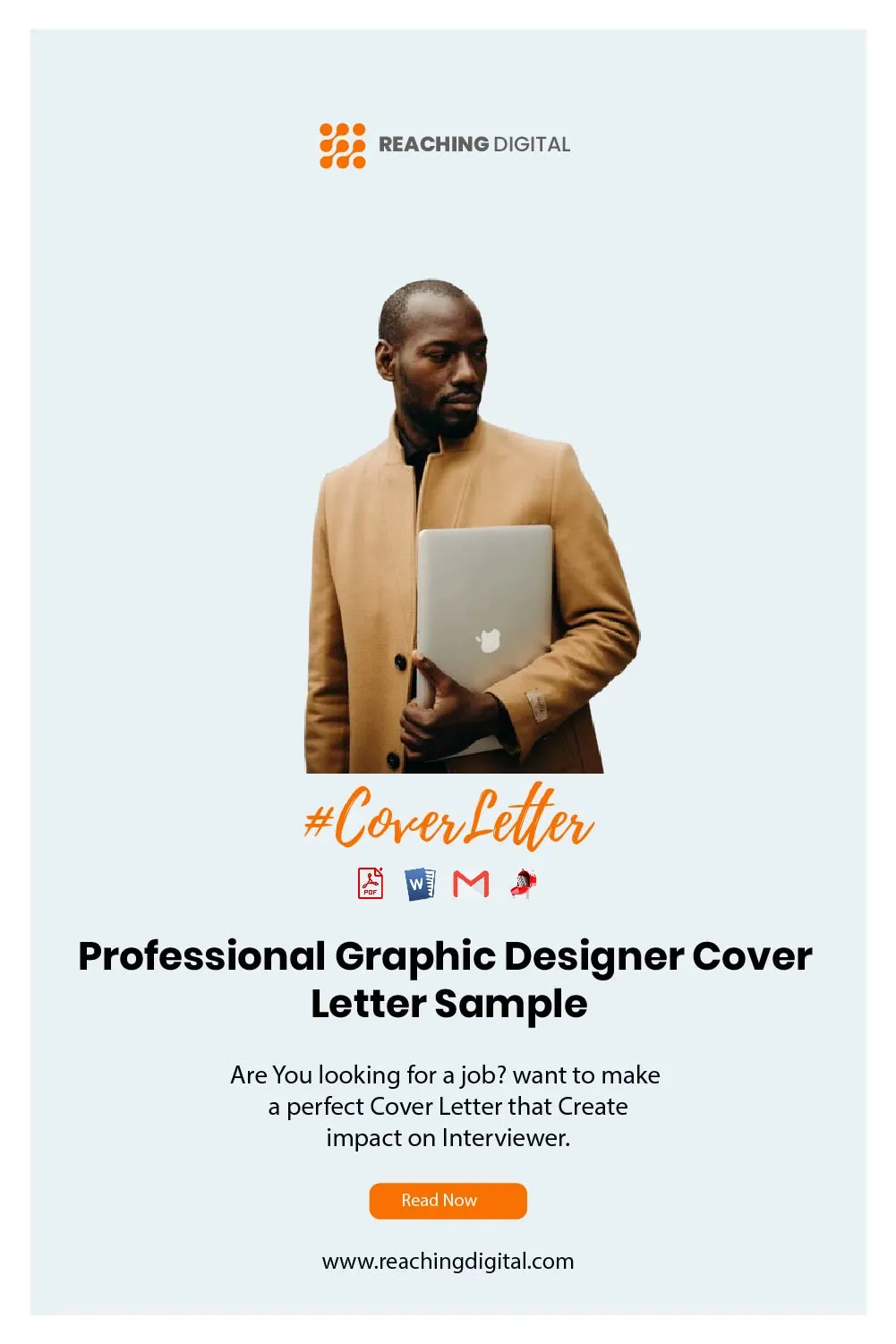
Generic cover letters are easily spotted and rarely successful. Tailor each cover letter to the specific job you’re applying for. Carefully read the job description and identify the key skills and experiences the employer is looking for. Then, highlight those skills and experiences in your cover letter, providing specific examples of how you’ve demonstrated them in previous roles. Customizing your letter demonstrates your genuine interest in the position and shows that you’ve taken the time to understand the company’s needs. If the job description asks for specific software knowledge, be sure to mention your proficiency. If it emphasizes teamwork, include examples of successful collaborations.
Include a Strong Call to Action
Your cover letter should end with a clear call to action. This is an invitation to the hiring manager to take the next step. State your interest in an interview, and express your enthusiasm for the opportunity. Make it easy for them to contact you. Provide your phone number and email address. Be specific. For example, ‘I am eager to discuss how my design skills and experience can contribute to your team. I am available for an interview at your earliest convenience.’ A strong call to action reinforces your interest and encourages the hiring manager to take the next step in the hiring process.
Proofread and Edit Meticulously
Before submitting your cover letter, proofread and edit it meticulously. Errors, even minor ones, can undermine your credibility and make a negative impression. Check for grammatical errors, spelling mistakes, and typos. Ensure your sentences are clear, concise, and easy to understand. Ask a friend, colleague, or mentor to review your cover letter as a fresh pair of eyes can often spot errors you might miss. A polished and error-free cover letter demonstrates your professionalism and attention to detail, which are essential qualities for any graphic artist.
Use High-Quality Visuals
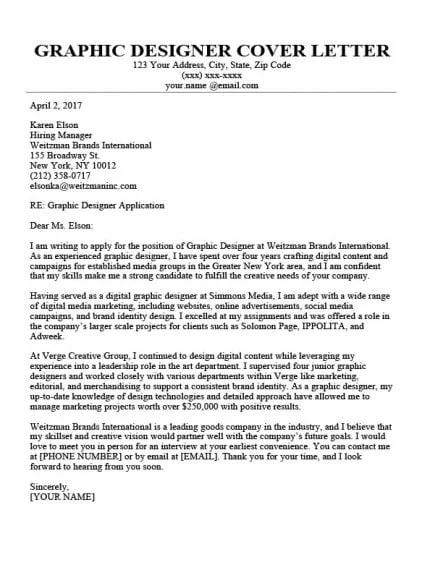
As a graphic artist, you understand the importance of visual communication. While the content of your cover letter is paramount, the visual presentation matters just as much. Ensure your cover letter has a professional design, with a clear layout, readable font, and appropriate use of white space. If possible, consider creating a custom header or footer that reflects your personal brand. Make sure your cover letter looks as good as the designs you’re showcasing in your portfolio. Quality visuals set you apart.
Incorporate a Professional Design
Your cover letter design should reflect your design skills. Use appropriate fonts, colors, and layout to create a visually appealing and professional document. Aim for a clean and modern look that aligns with your personal brand. Keep the design consistent with your resume and portfolio to create a cohesive brand identity. Avoid overly complex or distracting designs that might detract from the content. Your cover letter is a chance to showcase your design aesthetic, demonstrating your attention to detail and ability to create effective visual communications.
Create a Cohesive Brand Identity
A cohesive brand identity extends beyond your portfolio; it should be reflected in all your professional materials, including your cover letter. Use consistent fonts, colors, and design elements across your resume, cover letter, and portfolio. This creates a unified brand image that reinforces your professionalism and design skills. Consider incorporating your logo or a unique design element into your cover letter to make it instantly recognizable. The overall consistency and aesthetic of your branding will help you stand out and leave a memorable impression on the hiring manager.
Consider Using a Portfolio Link
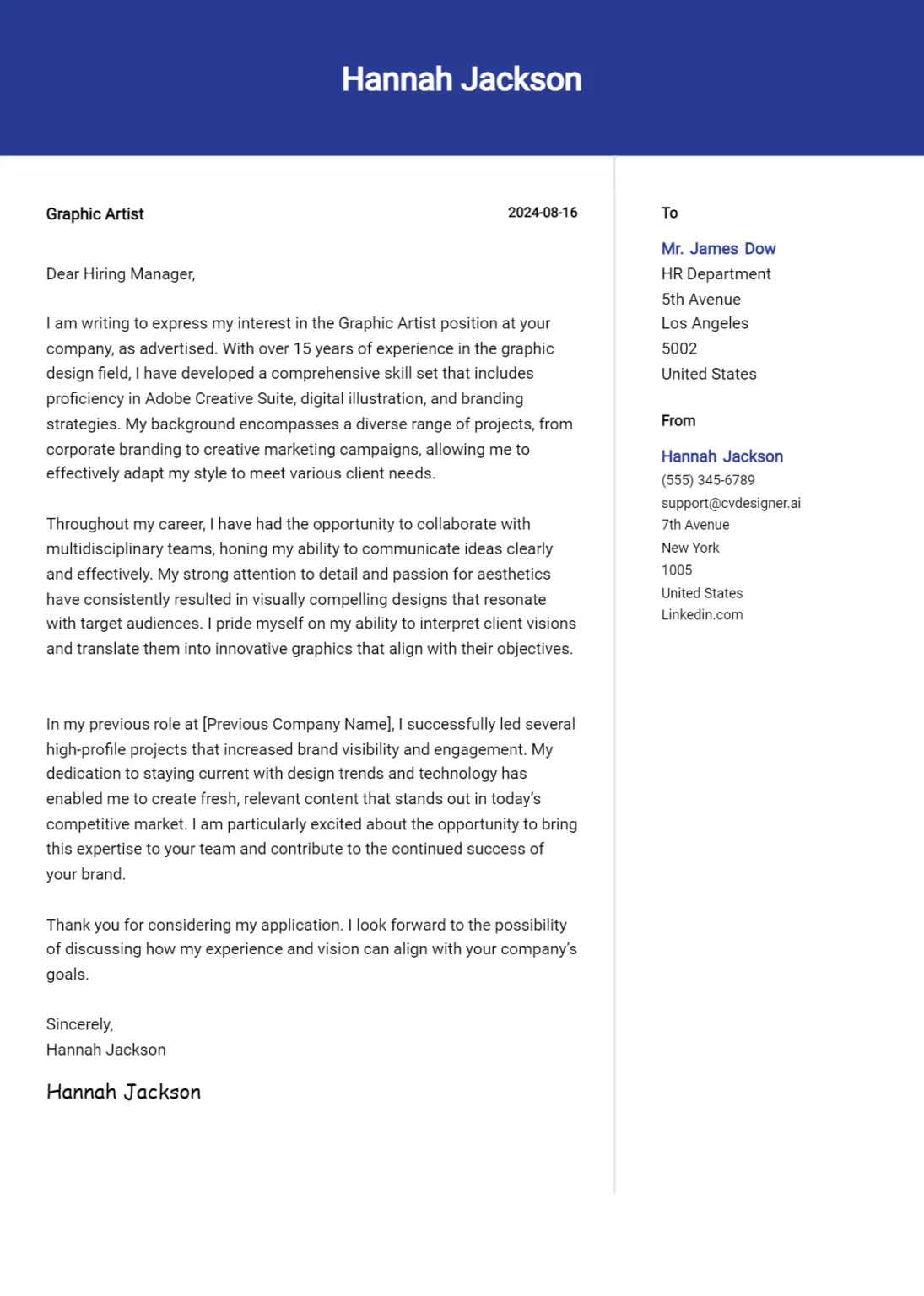
In today’s digital age, a strong online portfolio is essential for graphic artists. Include a link to your online portfolio in your cover letter and resume. This allows potential employers to easily view your work and get a better understanding of your skills and style. Make sure your portfolio is up-to-date, well-organized, and showcases your best projects. Consider creating a custom portfolio landing page that matches the aesthetic of your cover letter to enhance the overall impression. If you are applying through a platform that supports it, also provide the URL to your website.
Address the Hiring Manager Directly
Whenever possible, address the hiring manager by name. This personal touch demonstrates that you’ve taken the time to research the company and shows your genuine interest in the position. If you can’t find the hiring manager’s name, try to find it on LinkedIn or the company website. If that’s impossible, you can use a general greeting such as ‘Dear Hiring Manager.’ Avoid generic greetings like ‘To Whom It May Concern’ if possible, as they can make your cover letter feel impersonal and less engaging. Making the cover letter as personal as you can sets you apart from the competition.
Research the Company
Before you even begin writing your cover letter, thoroughly research the company and the position you’re applying for. Understand the company’s mission, values, and recent projects. Review the job description carefully and identify the specific skills and experiences the employer is looking for. This research will help you tailor your cover letter to the company’s needs and demonstrate your genuine interest. Mentioning specific company projects or initiatives shows that you have taken the initiative to learn more about them and are truly interested in contributing. Understanding the company helps craft an effective and relevant narrative.
Demonstrate Enthusiasm and Passion
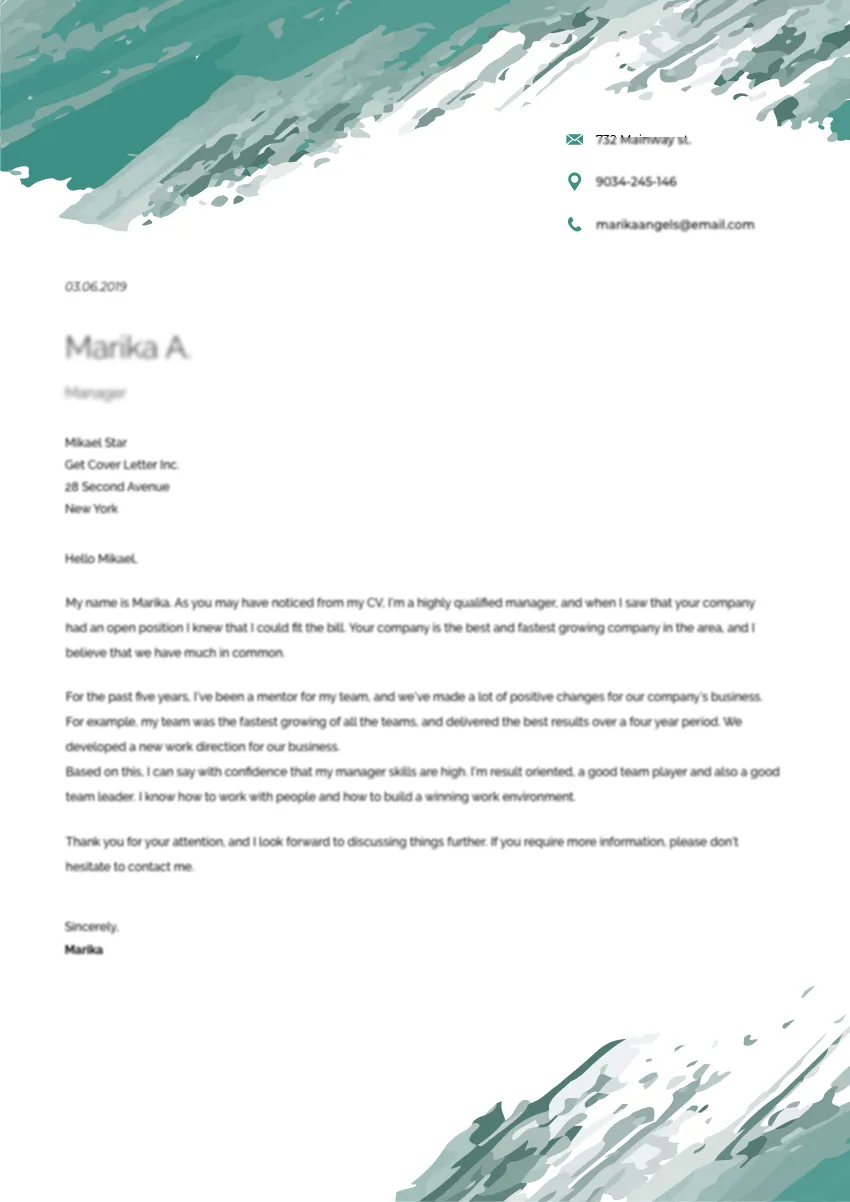
Let your enthusiasm and passion for graphic design shine through in your cover letter. Express your excitement about the opportunity to work for the company and contribute your skills to their team. Show that you’re genuinely interested in the position and the company’s mission. Use positive and engaging language to convey your passion, and provide specific examples of why you’re excited about this particular opportunity. Your enthusiasm can be contagious and make a lasting impression on the hiring manager.
Express Gratitude
Always express your gratitude to the hiring manager for considering your application. Thank them for their time and consideration. This simple gesture shows respect and professionalism. If possible, mention that you are looking forward to hearing from them soon. A gracious ending leaves a positive impression and reinforces your interest in the position. A polite closing is a sign of respect and attention to detail.
In conclusion, crafting a compelling cover letter is an art form in itself. By understanding its purpose, highlighting your skills, showcasing your design abilities, and tailoring it to each specific job, you can create a cover letter that truly impresses. Remember to use high-quality visuals, incorporate a professional design, and express your enthusiasm and gratitude. Following these steps will significantly increase your chances of landing an interview and securing your dream graphic artist position. Your cover letter is your chance to shine, so make it count!
